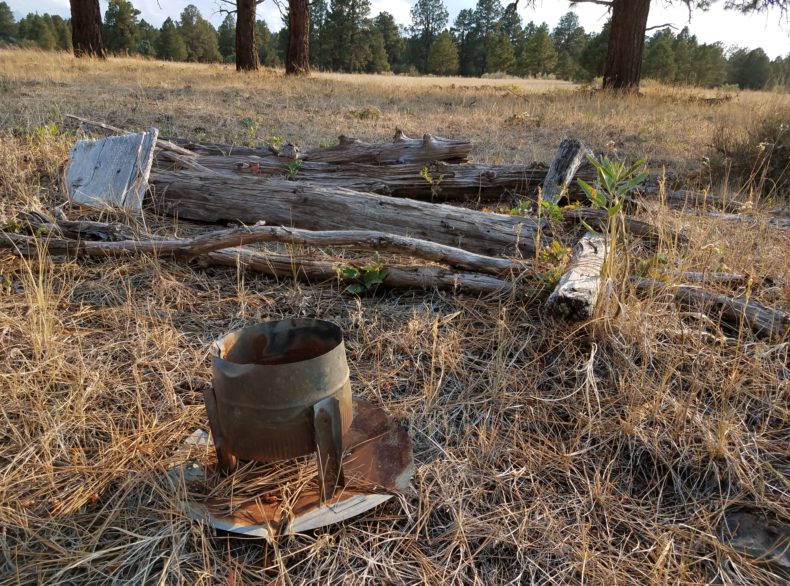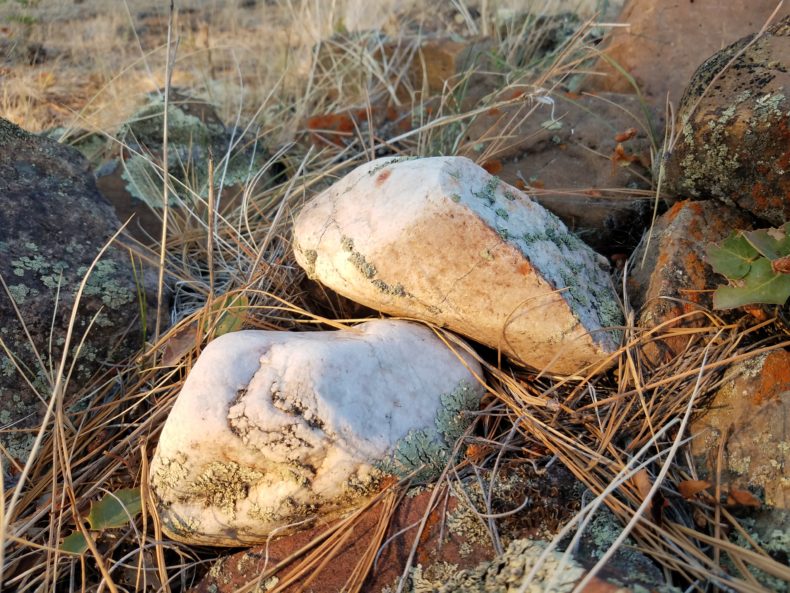 We were walking through meadows of dry grass on our way to a friend’s house when I stopped with my gal in a lone ponderosa grove where I once lived. I showed her what had been my porch and the place where I had a wood stove, all of it gone now. My front door had been a flap of canvas that on summer nights I’d leave open to let in the stars and the evening perfumes.
We were walking through meadows of dry grass on our way to a friend’s house when I stopped with my gal in a lone ponderosa grove where I once lived. I showed her what had been my porch and the place where I had a wood stove, all of it gone now. My front door had been a flap of canvas that on summer nights I’d leave open to let in the stars and the evening perfumes.
It was a tipi, about 20 feet across, and I had been the sole resident of these pastureland meadows just off the dirt track of County Road 1, Ouray County, Colorado. The road is now paved, a few houses gone up, golf course across the way. My tenure, almost 30 years ago, was turning into archaeology.
Do you ever go back to where you grew up and see how time has treated you? Decades later, you look up at the second story bedroom window you used to climb through when everyone else was asleep. Or the place you had a baby in your arms, rocking it gently night after night. This is a form of archaeology, unearthing physical recollections, reassembling your history. Your memories are the artifacts. The place brings them back together.
A metal stovepipe cover lay on the ground, rust and pine needles gathered in its dish. I’d installed it after the first snowstorm had howled straight down the stovepipe and smoked me out. There’d been a frame bed that I slept in, and a desk where I wrote by oil lamp. Both were almost visible in the air where they’d been.
Working on excavations at ruined pueblos in the Southwest, I’ve done the same sort of thing, scraping with a trowel in dust and imagining the smell of wood smoke, barking dogs, and children shouting in a place gone silent.
Sometimes I open my eyes in my own bed not sure where I am. I’ve lived so many places, year to year, night to night, in a different city, in a sleeping bag in the desert, on a friend’s couch. It helps to go back and see where I’ve been, to see what connects me through time. When I feel the same about humanity, fearing we’ll wake up and not know who or where we are, I turn to archaeology and the breadcrumbs of memory people have left around the world.

Some years back, I got wind that a hero of mine, a 1940s-1950s explorer of southeast Utah, was dying in a nursing home. I talked to some friends my age who knew him and decided what we needed was to wheel him out of there, drive to Canyonlands, and park him on a rim looking across needles and hamburger rocks in the desert he once traversed. Among advanced Alzheimer’s patients, the older memories may become the only ones left. Word came back that he was beyond that. It would be confusing and frightening to him. We didn’t do it.
One of the CDC’s suggested ways of preventing Alzheimer’s is to practice memorization. Getting ahead of the game, I am memorizing the story of my life, the small events and places I might otherwise forget. If memories are retrieved more often, the effects of Alzheimer’s and other forms of memory loss appear to be staved off. I returned to the charismatic church where my soul was apparently saved when I was 13, and they led me, now bearded and non-religious, to the visitor’s part of the congregation. After the familiar sermon, I went down to the same altar where I used to pray and I got on my knees, connecting different ends of time by occupying the same space. It was Einstein who discovered space and time were the same. This has practical applications in our lives. I went back to vacant lots, now filled, where I used to play. I returned to intersections and parks and museums. I do this to ward off forgetting, and for the thrill of remembering.
I took her hand and showed her where I once saw rabbit tracks in the snow out behind the tipi. The next print, instead of rabbit, had been a stamp of what looked like angel wings, a hawk from above.
It is archaeology because it is physical. It is more than idea or behavior, like anthropology. It is matter in place. As important as when is where.
Near the remembered hawk’s wings in snow, I pointed out two white, quartz river stones in a pile of rough, dull-colored rock. I told her I’d collected these for a little sweat lodge I built. I’d heat the rocks in a fire outside until they glowed. One had a broken face on one side from splintering in the heat. I remembered how they sparked against each other when I dropped them into a pit in the dark, and when I splashed water on them, they hissed and darkened, filling the space with steam that I inhaled through my teeth. She asked how many people could fit in this sweat lodge. I told her one.
She pointed out the two white river stones had grown a fine compliment of lichens, unmoved since I last left them here. Man, I thought, I must be old!
She was wearing flip flops, and the sharp, late summer grasses stung her feet. Rather than walk to the road, she jumped on my back, holding tight with her arms and legs. I carried her across the ground, her bones on my bones, her heart on mine, a freshly made memory forming in this old place.
Photos of the tipi site from me, Craig Childs
Very well written…!
We are all wanderers in the universe, coming, staying, going…. life after life.
We revisit places in a different incarnation and something stirs in our heart..somethings wander into our dreams..
We yearn for something unknown..
We have a saying to the effect :
We are like logs of wood, floating on the ocean of life, to meet, to depart again and again… :
No matter the foot prints be on water or sand they are our archeology….
Ah. Those bread crumbs. Sometimes a bird or vole has eaten a few and made my path back more challenging
I recently finished doing something like this, only while writing a novel about a new widow traveling the Great Basin, winding her way back to Salt Lake where she was raised. Her visit was my visit, reliving memories of places and people. Your books are so much like that too as you tell us of your visits there, sometimes with friends or relatives … you Mom and then mingle them with your theses. We writers are always wandering in our archeology. Thank you for giving a name to this activity. Personal archeology. I love it.
Love this so much.